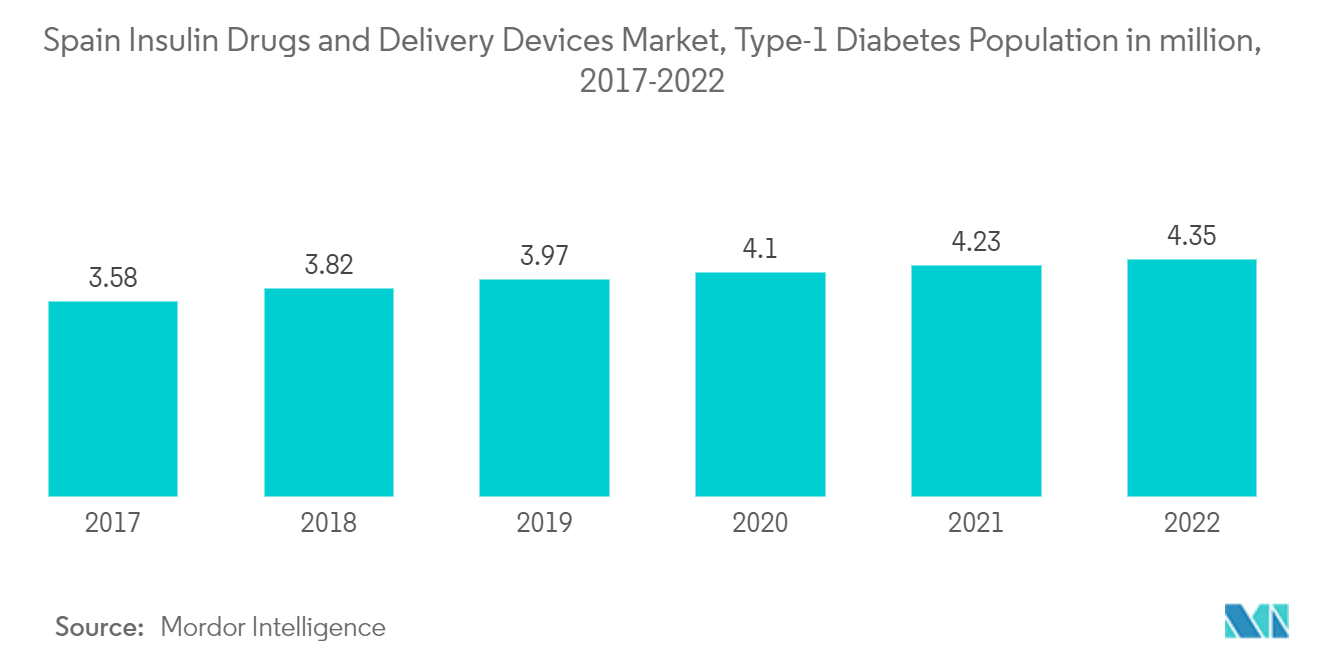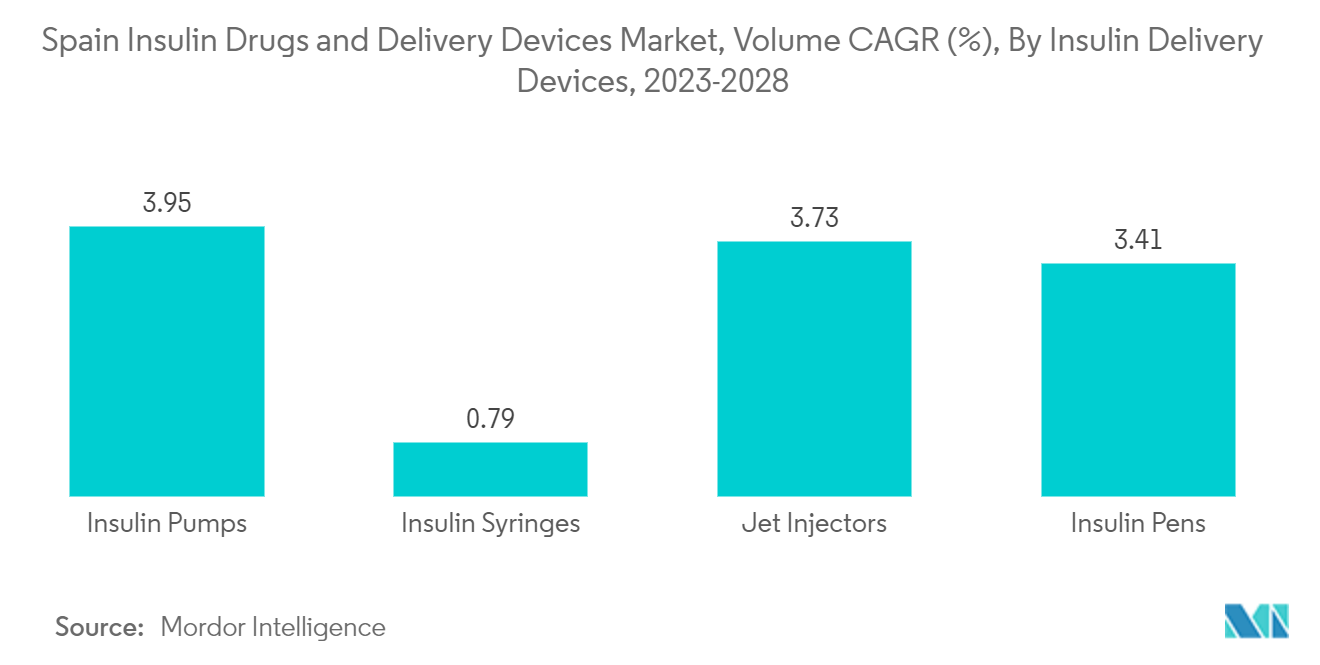Market Trends of Spain Insulin Drugs And Delivery Devices Industry
Rising diabetes prevalence
In Spain, the diabetes population is expected to increase by more than 2.5% over the forecast period.
According to the IDF 2021 report, diabetes prevalence in Spain reached 14.8%, or one in seven adults, the second highest rate in Europe. In addition, diabetes-related health expenditures in Spain reached 15.5 billion USD. Almost 30.3% of people living with diabetes in Spain were undiagnosed.
According to the Sociedad Espanola de Diabetes (SED), therapeutic education in diabetes has gone from being a necessity to becoming a priority and an urgency. The unstoppable increase in cases and the appearance of important developments in the control and management of the disease require, more than ever, training efforts accompanied by indispensable equity measures to facilitate the access of all people with diabetes to these new resources. The SED also recognizes the important progress made in the approach to diabetes, especially with technological advances. For example, the financing of Flash systems for people with type-2 diabetes on treatment with a bolus-basal insulin regimen has been approved.
When diabetes is undetected or inadequately treated, people with diabetes are at risk of serious and life-threatening complications, such as heart attack, stroke, kidney failure, blindness, and lower-limb amputation. These result in reduced quality of life and higher healthcare costs, leading to a greater need for access to care. Various pieces of evidence suggest that diabetes can be successfully managed, especially when detected early. Multifactorial intervention, including control of blood glucose, blood pressure, and lipids, can reduce the broad range of diabetes-related microvascular and macrovascular complications and premature mortality.
Therefore, the studied market is anticipated to witness growth over the analysis period due to rising prevalence and the aforementioned factors.

The insulin pumps segment is expected to witness the highest growth rate over the forecast period
An insulin pump is a device that delivers insulin continuously or automatically whenever required. The pump mimics the human pancreas. The insulin infusion pump works as an alternative to the traditional system of daily injections or an insulin pen.
Insulin pumps are expected to hold a major market share in the insulin delivery devices market and are expected to grow, registering a CAGR of more than 3.8% in the market over the forecast period because of their increasing technological advancement and their preference over other traditional methods due to continuous insulin administration. Insulin pump therapy is a well-established insulin administration method for people with type-1 diabetes. Pumps are a validated, time-tested therapeutic option for type-1 diabetes at all ages, enabling near-physiological insulin delivery in situations where the pancreas does not produce insulin. There are even pump models with remote controls, enabling parents of young children to either suspend or bolus insulin from a distance when the child is playing or eating. The insulin infusion pumps reduce the large swings in blood glucose levels, induce less pain, and deliver more accurately when compared to injections. These advantages of insulin pumps over the traditional delivery system are expected to boost the market.
The World Health Assembly Resolution 2022 recommended the integration of prevention and treatment of diabetes into primary health services, the development of pathways for a substantial increase in access to insulin, the promotion of convergence and harmonization of regulatory requirements for diabetes medicines and technologies, and improved diabetes monitoring and surveillance. Furthermore, it involves the WHO advising the Member States to ensure the uninterrupted treatment of people living with diabetes in humanitarian emergencies. This important milestone provides a global mandate for diabetes efforts for the next decade.
The roll-out of many new products, increasing international research collaborations in technological advancement, and increasing awareness about diabetes among people are expected to drive the market.


